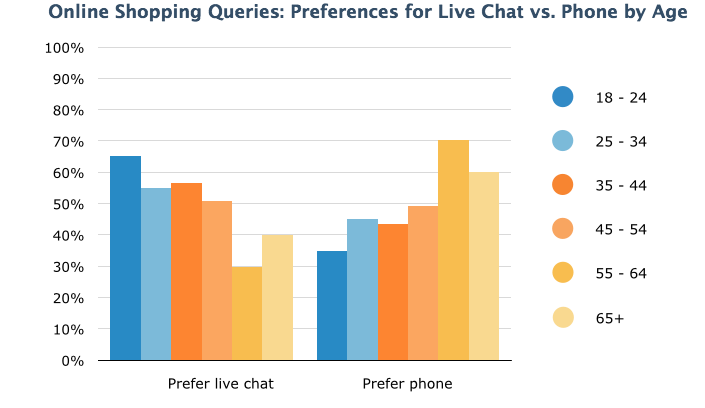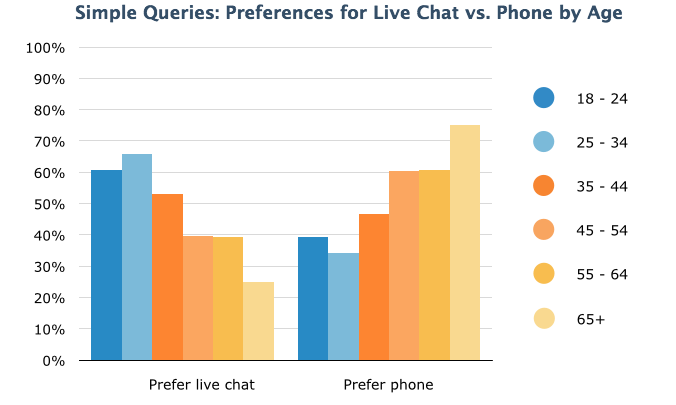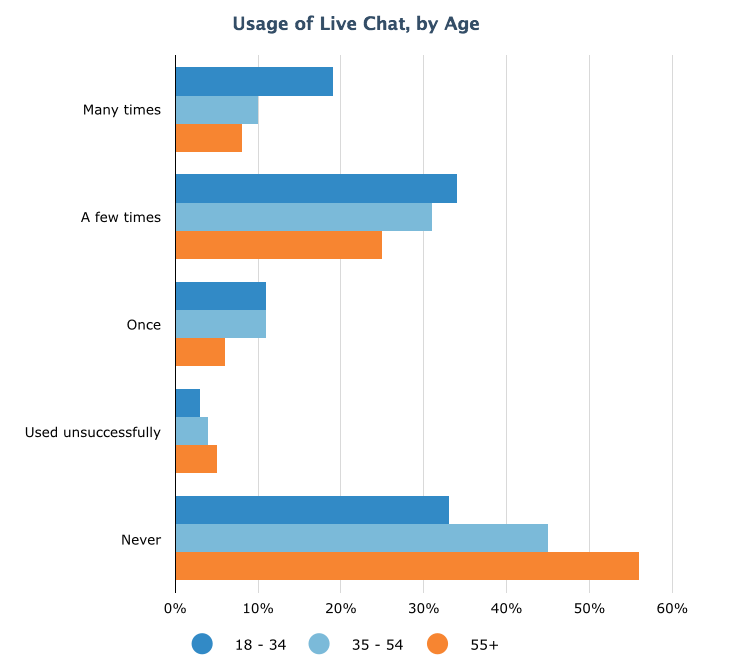At CTS Service Solutions, we believe one of the best ways to improve customer experiences is by making interactions ad easy as possible and by decreasing the hassle-factor.
Enter live chat.
Live chat contains a number of attributes that contribute to hassle-free experiences. From ease of first contact, to low-to-no hold times, to the convenience of customers interacting with service reps while performing other tasks, live chat offers an opportunity for organizations to assist customers quickly, easily, and cost effectively.
Live chat allows organizations to assist online customers in real time. When customers run into a problem, the customer can immediately take advantage of the live chat feature, interact with reps, and hopefully have their question answered or issue resolved quickly.
Live chat seems like a no-brainer.
However, investing in a new or lightly staffed customer service channel comes at a cost. Live chat is not for every customer, or every organization. Using data from a recent Software Advice report, we have formulated three questions to help you determine if live chat might be an effective channel for your customers.
What is the age of my target audience?
Although live chat has been around awhile and 56 percent of respondents in this survey said they have used it at least once, usage of the technology still skews heavily towards younger consumers.
According to the research, 56 percent of respondents aged 18 to 34 prefer live chat to phone, compared to 27 percent of respondents aged 35 and older.
If much of your customer base is made up of Millennials, live chat is likely to be not just appreciated but even expected.

Does your customer experience contain touch points where live chat could add value?
When you look at your customer’s journey, do you find touch points that tend to generate a high number of customer questions? Do you find online shopping carts being abandoned at certain points in the sales process? Depending on the complexity of the reasons, these two scenarios might be perfect places to implement a live chat window.
Despite the age skew, the research shows that customers are open to using live chat for simple inquiries.

Are most questions sensitive or complicated?
Many organizations or departments deal with questions or service issues that are complex or sensitive in nature. According to the charts above, the preference of phone versus live chat for simple questions or online shopping queries is fairly equal. But the numbers change for customers with financial queries; they prefer to have issues addressed by phone.
As seen below, 49 percent of respondents prefer using live chat for online shopping questions, yet only 26 percent prefer chat for financial questions.
If your company deals primarily with sensitive information, live chat might not be the most effective channel.
Of course, these questions are just a start. More detailed questions of technology, cost, scale, and organizational buy-in will inevitably be part of any discussion. However, with the many benefits live chat can create for your customers’ experiences, the three questions above should provide a good starting point for evaluating live chat’s potential usefulness to your organization.
Charts courtesy of Software Advice.








So I conclude after looking at this data that only youngsters prefer to talk on live chat. Good data. Thanks.
Appreciate it Sam. It wasn’t too big a shock to see some age skew of course, but I found the actual breakdown to be interesting.
Wow – I guess it depends on Sam’s definition of a youngster, since your data shows that all age groups under 54 prefer live chat to the telephone for online shopping, and all age groups under 45 prefer live chat to the telephone for simple queries. I’m younger than I thought!
You might also be interested in some data here from a survey Netop ran in the UK, showing a growing preference for live chat compared to email and telephone, and a particularly high preference among higher income groups.
http://www.netop.com/fileadmin/netop/resources/products/communication/live_guide/whitepapers/LiveChat-UK_LG-Whitepaper_032312.pdf
That’s a nice Article Adam, well it is observed that people from the age under 35 are more likely to use the live chat options, as they find is more easier to ask queries, but that is for some target audience only. As there are many out there who are under 35 but prefer phone call which takes lesser time in solving the problems. Thanks.
Thanks for this article, Adam. The third and fourth questions in this article make me want to ask additional questions:
1. How many live agents does my business need to cover all of these chats?
2. What’s the average handling time (AHT) for my agents to cover each session?
3. How long will they take to handle each chat?
Although these questions are for post-launch, it’s good that we generate data and reports to see if having a robust tool is required in case we decide to make this channel really enviable, or even form a dedicated group (to handle it 24/7 or only 9-10 hours a day).
The younger members in my team “strongly” prefer live chat every time they have issues and questions related to work, which can range from the most basic to the most complex. And it’s quick for them to say “I’ll chat with customer service later” so the data here provided interesting insights. It is because they get the answers or issues resolved faster while working. It’s convenient because they don’t have to look for a telephone. They’re right where they are – in front of the computer or a mobile device (if your web site supports app).